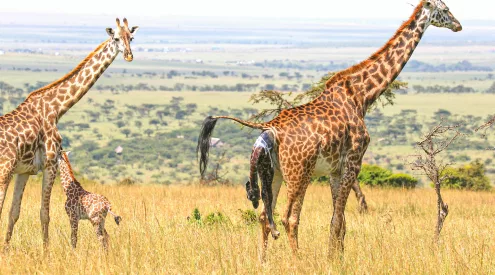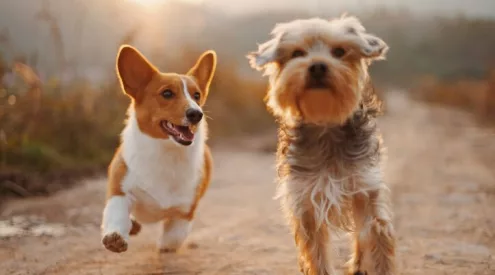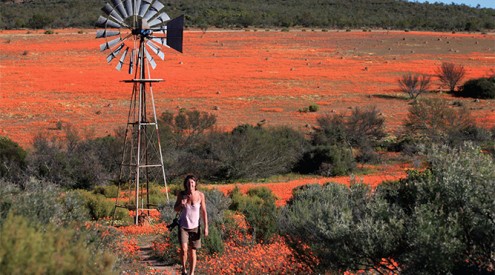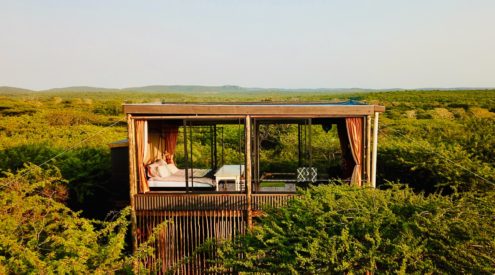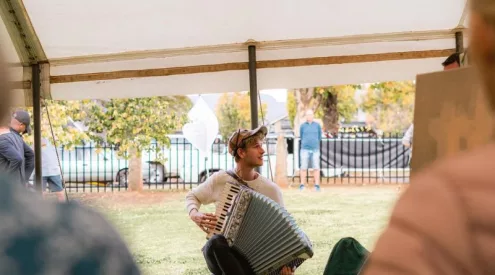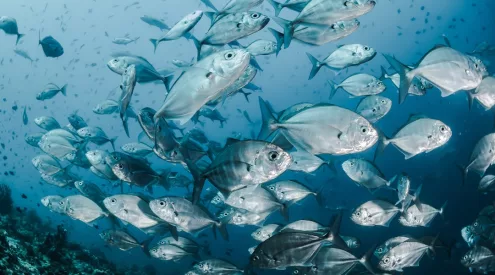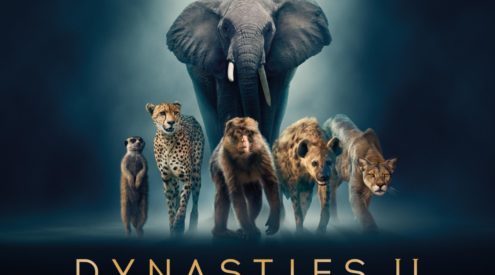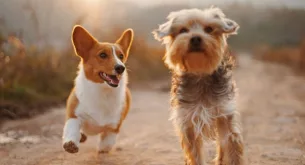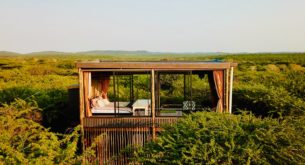I awake to vervet monkeys bounding onto my thatched roof (from the overhanging Zambezi teak tree) and to the tone-deaf cackling of red-billed francolins – only to find myself stranded at my rondavel, awaiting yet another tiresome repair to my 30-year-old 4×4. (By now the Hwange bush-mechanics merely bite their tongues and slowly shake their heads; I suspect secretly rubbing their hands together in glee.)
It’s parked under a crude pole and asbestos shelter – now surrounded by elephant dung. Neighbours joke that my elephant friends come looking for it. And for me. I know better though. They come for sweet pickings from my small, thriving garden. I gaze at the soaring sausage trees (Kigelia africana) inside my thatched fence. Incredibly, there are ten of them! They grew by accident from just one massive sausage, intended eight years ago to be a mere show-piece. But then the termites (who love to devour my thatched fence) built a nest on this enormous seed pod, and all of a sudden…ten trees! I anticipate the elephants’ glee when they eventually produce tasty flowers and succulent 10kg sausage-seed-pods of their own. My own delight at this prospect is somewhat less certain…
Africa ‘s ‘Big 5’ (elephant, lion, rhino, buffalo and leopard) are well-known and often seen in this Hwange region. While not a great fan of singling out the Big 5 – since there are countless African wonders to enjoy – if I were to choose Hwange’s ‘Big 5 trees’ I would certainly include the sausage tree, and would add Zambezi teak (Baikiaea plurijuga), baobab (Adansonia digitata), large false mopane also known in Zimbabwe as umtshibi (Guibourtia coleosperma), and naturally the elephants’ favourite camel thorn (Acacia erioloba) – whose velvety grey seed pods are one of their favourite treats.
Who then, I find myself wondering, would comprise the ‘Presidential Big 5’; the most esteemed of the Hwange Estate’s wild elephants? With more than 450 extraordinary jumbos to choose from – all of whom are undoubtedly something more than one of the routine ‘Big 5’ – it’s a tough call. But clued-up safari guides – including Ivory Lodge’s guide, Dumi – recognise them as Lady, Whole, Misty, Inkosikazi and Skew Tusk.
Over the past decade I’ve been fortunate to form special relationships with these and other Presidential giants, to monitor their close-knit family lives, and be accepted as one of their own.
Lady – sporting a broken left tusk, so that her tusks are now same-size – leads the ‘L’ family (whose members all have names beginning with this letter). They regularly gather around my 4×4 merely for company and often to sleep. I sing to Lady and she crosses her back legs and opens and closes her eyes so very slowly. It’s been particularly fascinating to watch her offspring, like Lesley, grow from cheeky child to mature new mother. What a privilege it is to be part of their lives.
Whole, easily identified by the hole in the middle of her left ear, is particularly placid. Her daughter Whosit is as cheeky and tenacious as ever. Whole always chooses to stand very close to my 4×4, often staring at me accusingly – as if she thinks headstrong Whosit, and her equally determined grandchild Wish, are my fault! These endearing ladies never fail to make everyone smile.
Misty is an exceptionally gentle giant who, like Lady and Whole, comes to me when I call to her. In 2008 she gave birth to a calf that was named Masakhe, which means (in the local Ndebele language) ‘to rebuild that which has been broken’ – a fitting name in these times. Now with a large tear in her right ear, Misty enjoys close contact and the comfort of my door, often standing within centimetres of my arm for over an hour. With no enticement other than my voice, she chooses to be there. The matriarch of this family is Mertle, equally friendly but bolder and more boisterous than mellow Misty.
Inkosikazi is an enormous tuskless cow (one of five big tuskless females who regularly wander this estate) with easily identifiable notches in her right ear. She’s the undisputed ‘queen’ of the Presidential Elephants. Both her and Skew Tusk – whose peculiar right tusk twists under her trunk – have been known since the 1970s, and are two of the original 22 elephants that formed the nucleus of what eventually became the ‘Presidential Elephants of Zimbabwe’. Both now estimated to be in their late-50s, they continue to ably lead their mild-mannered families through the changing seasons. Sometime within the next decade both will – if the sport-hunters and poachers keep their distance – die of old age; quite an achievement in these times.
These are five of the most renowned Presidential Elephants, but as with any ‘Big’ or ‘Little 5’, there are scores of others, in addition to these, equally deserving of your attention. Nonetheless the ‘Presidential Big 5’ are an added enticement for elephant lovers planning a visit to this Hwange region with game-drives on the Hwange Estate. As is the case with all wild animals in unfenced areas, sightings can’t be guaranteed although there’s always a high probability of close encounters with Presidential families, especially in the dry-season.
Hwange’s ‘Presidential Big 5’ – together with all of its stunning fauna and flora – welcome the return of the tourists.

